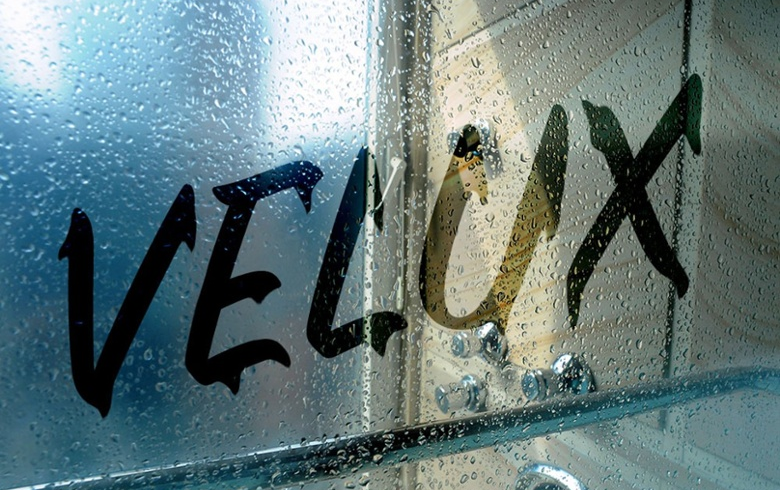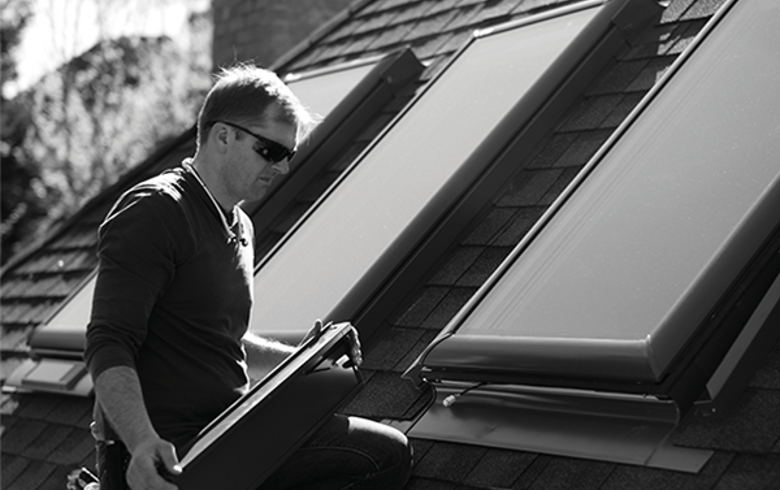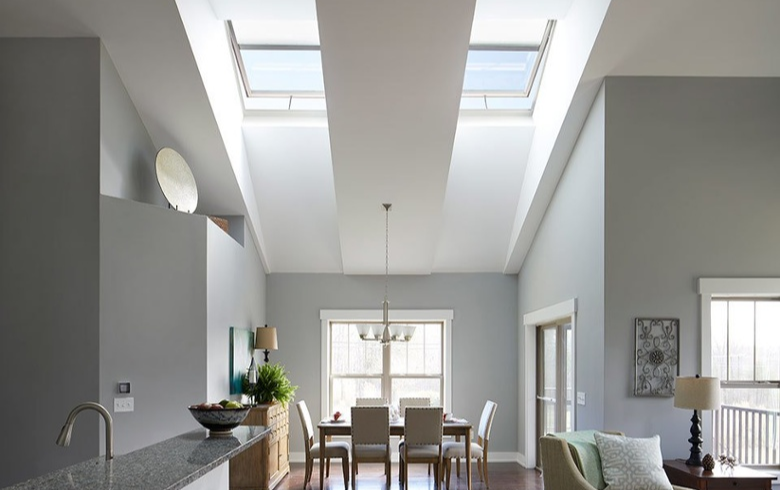Homes are more airtight and energy-conscious than they've ever been before. With a tighter the build, ventilation matters. Eliminating excess moisture with adequate ventilation and air circulation can go a long way in preventing condensation.
When a Leak Isn't a Leak
The first thing a homeowner notices during the winter months is condensation forming on their windows and skylights. And the first thing that comes to their mind is that the skylight or window is at fault. However, that's not the cause. It's actually the excessive moisture in the room.
Understanding Condensation
Condensation is the conversion of vapor to liquid. It occurs when the air becomes saturated with moisture and releases it in the form of water.
It is recognized by the wet mist that sometimes clouds the interior glass on your homes windows.
Condensation is usually the first warning sign that a home is retaining too much moisture. Even if a home doesn't feel damp, that excess moisture could be doing damage in unseen places.
So, What Causes Excess Moisture?
The air around us contains water vapor (humidity), and we add more water vapor to it by normal breathing, perspiration, cooking, cleaning and showering. When the air becomes saturated with excess humidity, it dispels the moisture by condensing it back into water. This is what shows up on your windows glass.
Here is a quick chart on humidity levels based on engineering studies at 70°F indoor air temperature:
|
Outside Air Temp |
Inside Humidity |
|
-20°F or below |
15-20% |
|
-20°F-10°F |
20-25% |
|
-10°F-0°F |
25-30% |
|
0°F-10°F |
30-35% |
|
10°F-20°F |
35-40% Note: If your relative humidity is above these levels, |
Why Does Condensation Occur Mainly in the Winter?
Condensation occurs more often during cooler weather because a greater temperature difference exists between the warm interior of your home and the colder outdoors.
Warm air carries larger amounts of water than cold air. When warm, moisture-laden indoor air contacts a cool surface, such as a window pane, the moisture in the air forms condensation on that cooler surface.
Fighting Condensation: What to Look For
- Mildew on walls, window seals and baseboards
- Peeling or bubbling exterior paint
- Deteriorating attic and wall insulation
- Damaged floor tiles and deteriorating furniture
- Rotting of structural wood between outside walls
Help Your House Breathe Easier
Because you can't stop all sources of moisture in your house, ventilation is very important. Your home needs to breathe to fight condensation.
Remember that cold air can hold less water vapor than warm air, so in the winter the air outside is often drier than the heated air in your home. So, by allowing moist inside air to escape and dry outdoor air to enter, you can reduce a homes humidity level.
Here are some steps to help ventilate a home:
- Run kitchen and bathroom exhaust fans more often during the winter to expel hot moist air.
- Open a window in each room a few minutes daily to keep air circulated.
- Keep window drapes, blinds and shades open, allowing warm air to circulate around the glass.
- Keep attic louvers open, because hot air rises and can be released to the outside.
- Open basement vents and crawlspace vents to release moisture to the outside, reducing dampness under your house.
- Make sure your clothes dryer and gas appliances properly vent moisture-ridden air to the outside.
- Install a fresh air intake on your furnace.
How Installing Skylights Can Help
Ventilation is a big step in the fight against condensation, which is why VELUX builds skylights with several exclusive features that can help a house breathe easier.
- They open
- VELUX Roof Windows and Ventilating Skylights can be opened with manual or electric controls to release the warm, moist air within a home.
- Wood sash and frame help insulate
- All VELUX Roof Windows and Skylights are constructed with quality wood, not metal or vinyl. Wood is an excellent natural insulator because it does not conduct heat like metal or vinyl.
- Energy efficient glass
- VELUX Roof Windows and Skylights are available with Low-E insulated glass. Low-E keeps the interior glass pane warmer to lessen the chance of condensation forming.
- Gasket system drains condensation
- Should condensation occur, our skylights are even equipped with an exclusive gasket system that aids drainage of condensation to the outside.
Skylight Maintenance Tips
Before leaving our factory, all roof windows and skylights are treated with a water-based fungicide and bactericide. After installation they should be given further coats of a good quality paint or varnish at regular intervals.
Use the Stack Effect
Paul Braun, VELUX Sales Representative and fellow builder, Tim O'Brien of Tim O'Brien Homes show how VELUX products can freshen a home and prevent condensation with physics.





